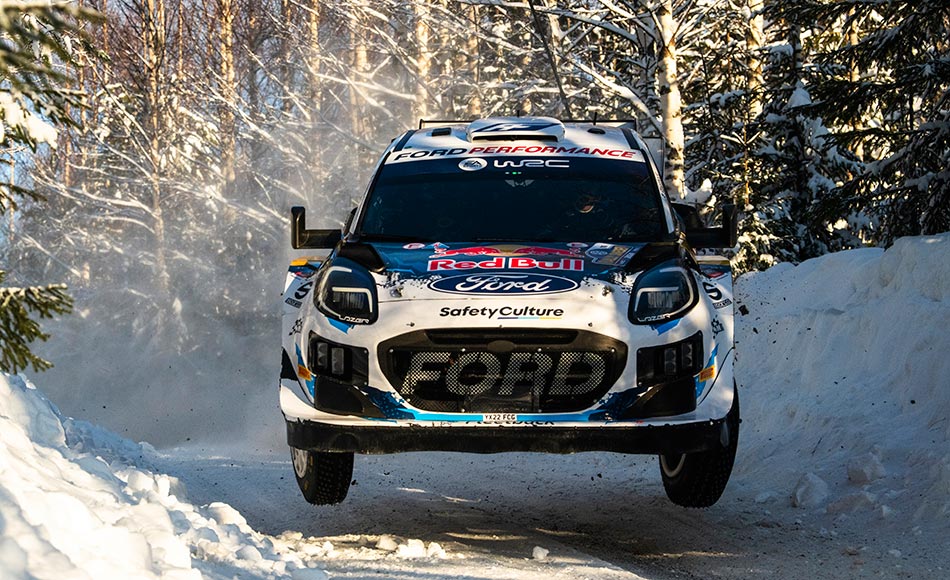The FIA has announced that the current hybrid power unit will be ditched from the 2025 WRC onwards.
New regulations will be introduced from the 2025 WRC season onwards. A roadmap including promotional, sporting and technical objectives has been set out by the motorsport governing body. The most notable change is the decision to abandon the hybrid-powered Rally1 cars from next season (2025) onwards. This effectively means that the hybrid-powered Rally1 cars, introduced in 2022 WRC, will thus be discontinued after three years.
The future of the WRC’s top level has been a big talking point in the rallying world. While Rally1 cars will continue to be the base of rallying’s top tier, they will be run without a hybrid unit. To compensate for performance, the overall weight of the cars will be reduced. Further changes, with the aim to control costs, consist of a reduced turbo restrictor as well as reduced aerodynamics. Details regarding the (targeted) power output of the 2025 cars were not mentioned today. The FIA says it will publish the 2025 sporting and technical regulations by the end of June.
“The current Rally1 car will continue as the WRC’s flagship vehicle in both 2025 and 2026 but with modifications to reduce cost and performance. These include the removal of the plug-in hybrid unit, with the performance compensated by a reduction in overall weight, and a reduction in the air restrictor and aerodynamics.”
Rally2 WRC kit introduced in 2025
“Rally2 cars will continue in their current form for the duration of their homologation as the basis for national and international series.”
However, Rally2 cars competing at WRC events will be eligible to be fitted with a so-called WRC kit. This WRC kit consists of a larger restrictor, larger exhaust, optional paddle shift gearbox and a rear wing. The introduction of the Rally2 WRC kit is meant to ‘reduce the performance gap between Rally1 and Rally2 cars.’
2026 Rally1 cars: around 330hp and capped at €400,000
From 2026, revised technical regulations will be introduced for the WRC’s top level. These technical regulations will be based on the current Rally1 concept, meaning that the new cars will use a common safety cell to reduce costs and complexity. The common safety cell will allow manufacturers and tunes “to develop cars with their own bodywork based on production models including B-class, C-Class, compact SUV or a Concept Car.” Performance will be equalised through center of gravity and aerodynamics.
The power output of the 2026 Rally1 cars will be targeted at 330hp, “with the engine performance controlled by a reference torque curve for all cars.” Engine and transmission will be cost-caped and technology limited to Rally2 equivalence. Further, aerodynamic efficiency will be limited as well as a top speed restriction to reduce development and cost.
The cost per 2026 Rally1 car will be capped at €400,000. Further, “WRC manufacturers will be required to make their cars available for sale directly from the finish parc fermé of a WRC event.”
FIA aims for all electric WRC category “at the earliest opportunity”
The final technical objective of the roadmap is regarding the introduction of an (all) electric category in the WRC: “At the earliest opportunity, an electric category will be introduced into the WRC with the FIA technical department charged with establishing suitable technical regulations that could utilise the new Rally1 safety cell and achieve parity of performance with Rally1 cars running on sustainable fuel.”
FIA President Mohammed Ben Sulayem said: “The WMSC [World Motor Sport Council] members carefully considered the recommendations of the WRC Working Group and were united in their support of the series of objectives that have been established. To be at the point where the WRC Commission can now work on finalising proposals that will go a long way towards cementing the WRC’s future course, once approved by the WMSC, is a significant moment for the championship, its stakeholders and the rallying community in general. It’s also important to note that the results of the WRC Fan Engagement Survey will be carefully considered by the WRC Commission during the process of drafting the final proposals. I thank all those who took part as we continue the process of delivering a WRC that’s relevant for the present and fit for the future.”
Photo: Red Bull Content Pool

